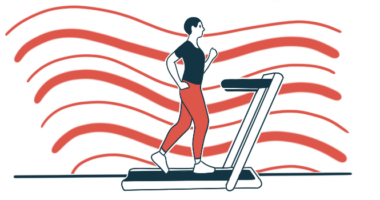Google Maps Timeline may help in monitoring walking ability in MS
Smartphone app may be useful tool for clinicians, study suggests

Assessing a person’s daily walking patterns using the Google Maps Timeline tool may help doctors remotely monitor fatigue, walking ability, and disease severity in people with multiple sclerosis (MS), a study suggests.
The digital tool is built in the smartphone application Google Maps and records daily walking distance and time. It also enables the assessments of total number of days with walking activity as well as walking speed — all important markers for MS patients.
Indeed, the study found that most of these measurements were significantly linked to disease-related measures.
The findings suggest that Google Maps Timeline may provide “actual estimates of daily walking activities in MS and related self-perceived symptoms, with the advantage of remote recording,” the researchers wrote.
The study, “Google Maps Timeline: An open-access digital tool to monitor walking abilities in people with multiple sclerosis,” was published in the Multiple Sclerosis Journal – Experimental, Translational and Clinical.
Google Maps Timeline a ‘promising proxy’ for real world walking ability
A large majority of MS patients experience impairments to their walking abilities. However, evaluating walking impairments in the clinic is time consuming and doesn’t always accurately quantify patients’ experiences in real life.
A number of digital tools have been developed to remotely monitor patients’ walking abilities, but most are expensive and can only be used for research purposes.
Now, a team of researchers in Italy set out to evaluate whether the Google Maps Timeline could be used for such assessments.
Because the tool provides walking distance and time, it may be a “promising proxy for walking abilities in real-life settings,” the team wrote.
In total, nine MS patients — five women and four men — were enrolled in the proof-of-concept observational study. The patients had a mean age of 43.1 years.
Using data recorded in the app over a mean of 24 days, the researchers computed information about the patients’ walking patterns. Specifically, they determined the average distance and time the participants walked each day, their average walking speed, and the percentage of days with walking activity.
At enrollment, patients also were assessed on a number of disease-related measures. One was disability level, assessed with the Expanded Disability Status Scale (EDSS), while another was the extent to which MS impacted the person’s walking ability, as measured with the Multiple Sclerosis Walking Scale (MSWS). Walking and leg function were determined with the Timed-25 Foot Walking Test (T25FWT), which assesses how long it takes an individual to walk 25 feet.
Additionally, fatigue and quality of life were assessed using the Fatigue Severity Scale (FSS) and the European Quality of Life questionnaire, respectively.
The results showed that fewer days of walking activity were significantly associated with higher fatigue levels and a greater impact of MS on walking ability. In turn, a higher walking speed was significantly linked with lower fatigue severity.
GMT [Google Maps Timeline] seems an effortless and open-source tool to monitor walking in [people with] MS.
The time a person spent walking and the distance walked were associated with better walking function on the T25FWT test. Walking distance also was linked to lower disability levels and better quality of life scores.
“In our proof-of-concept study, we showed that GMT [Google Maps Timeline] walking activities’ parameters were associated with a number of clinical measures of gait, disability, and fatigue, as well as quality of life,” the team wrote.
“GMT seems an effortless and open-source tool to monitor walking in [people with] MS,” the researchers concluded.
They added that the tool may be used in the future in clinical practice to monitor disease progression and treatment response, as well the impact of rehabilitation approaches, in people with MS.







